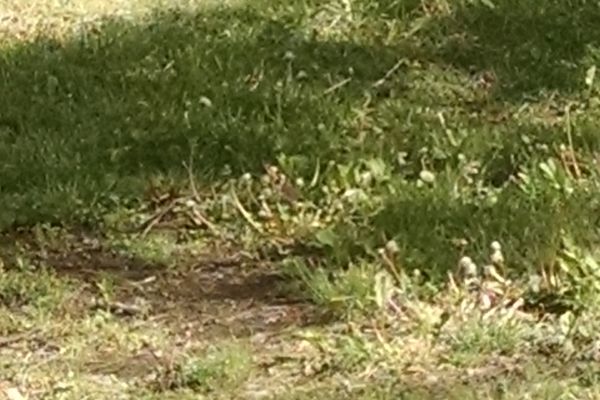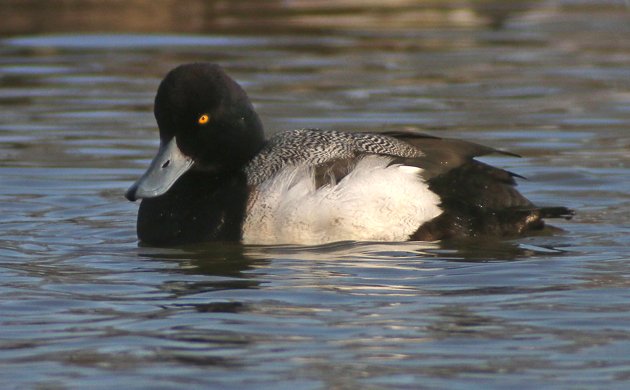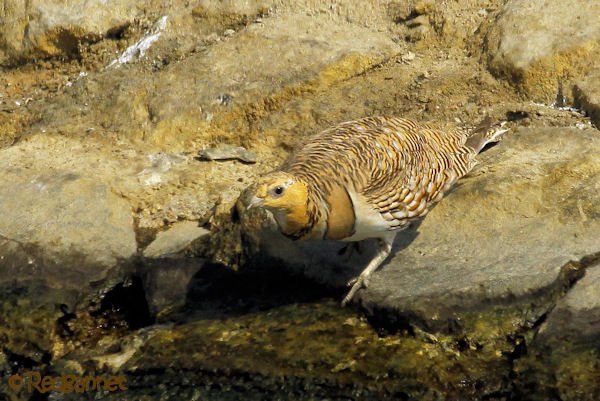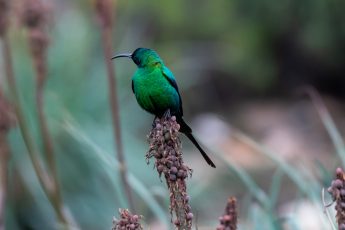
When I was a kid, and couldn’t travel, I thought patch birding sounded dreadfully boring. Now that I can travel, I have perversely discovered the charms of really working over one spot of habitat across the seasons and the years; as such I’m on a mission to find 100 species of bird in Socrates Sculpture Park, a bit of Queens between the East River and Vernon Boulevard where artists create open-air displays. And I’m getting close! For example I added two new species just this morning.
Species #75 for Socrates Sculpture Park is Red-winged Blackbird. Veering wildly to the other end of the expectedness spectrum, Species #76, with an asterisk, is European Goldfinch. Why an asterisk? Because the European Goldfinches presently found in New York are believed to all be escaped cage birds or, at best, a handful of their first-generation descendants. In order for introduced birds to become countable in the high-stakes world of official bird-counting, they must establish a self-sustaining breeding population (think everybody’s favorites, the European Starling and the House Sparrow).
Oddly enough, there were once self-sustaining populations in New York – introduced in the late 1800s by the same sorts of bright sparks who brought us all those starlings and sparrows. Thomas Gilbert Pearson, in his Birds of America, mentions multiple introductions including one in Hoboken in 1878 and J. T. Nichols describes them as “a common resident of Central Park” in the 1890s. But by the time these writers published, in 1923 and 1936 respectively, the European Goldfinch was on the decline. Pearson lamented that “this cheery and attractive little bird is not to become as common as the English Sparrow, and ‘more’s the pity’.” Nichols seemed a bit more optimistic; he speculated that the species, though it dipped in numbers between 1915 and 1925, continued to breed in the region into the 1930s, presenting observations of a nest in Garden City, NJ in 1935, the same year that a pair was also documented in Long Island.
Over time, Pearson’s prediction proved accurate. But even once the breeding birds were indisputably gone there have been sporadic sightings in New York City over the years – due, as I said above, to a slow but steady trickle of escaped or released cage birds. In Chicago in the early 2000s a sudden influx of European Goldfinches – possibly due to a rogue deliberate release – resulted in nesting records from Illinois and Wisconsin. New York is no more immune to such stunts than other cities. It’s not out of the question that the European Goldfinch could come again, although whether that is a good thing probably depends on whether you’re T. Gilbert Pearson or a native finch who’d like less competition, thanks.
Given the history of the species, I was amused to note that the Socrates European Goldfinch was keeping company, not with American Goldfinches, but with a pair of bright and handsome House Finches.
Featured image by me. You can tell because it is terrible.






 New writers welcome – please contact us for details.
New writers welcome – please contact us for details.

















I love European Goldfinches, they’re so striking. I’ve gotten better looks at them here than in France. And, my first European Goldfinch was in Chicago in 2004, so maybe it was part of that released group.
Wouldn’t surprise me! Great Tits were also released at the same time, apparently, and also nested in Wisconsin at least once.
They are charming little birds with such a cheery song. I would persevere with the releases and introductions. I’ll bring some more over next time I come.